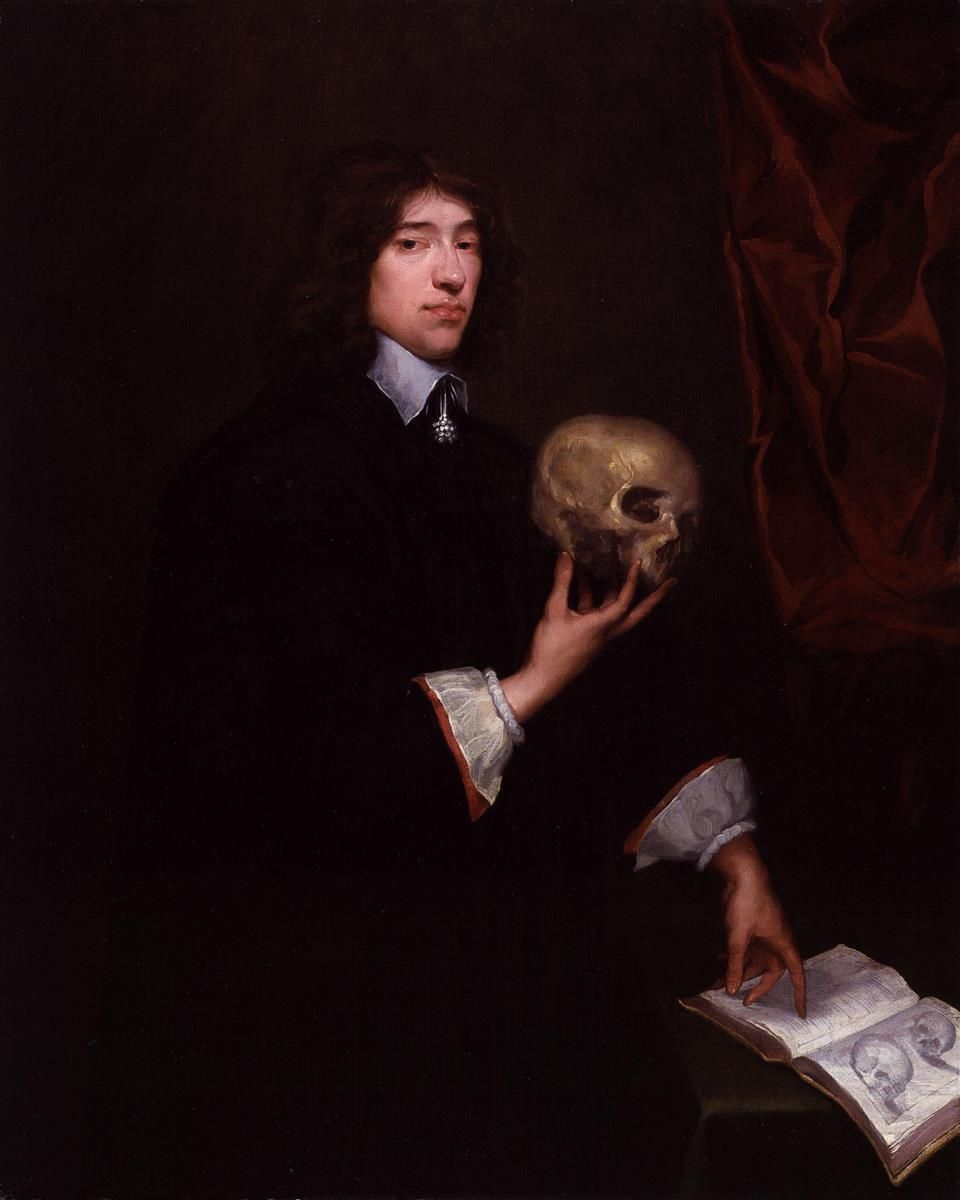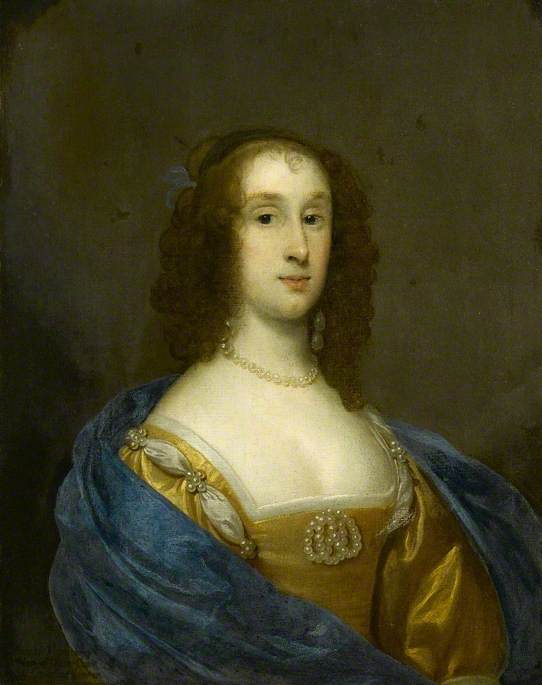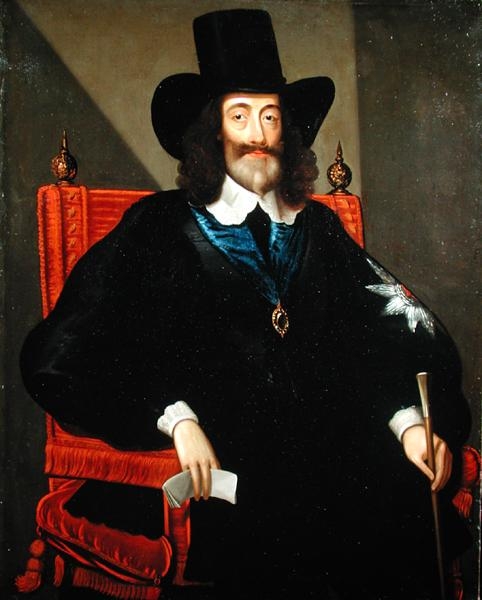|
Matthew Tomlinson
Matthew Thomlinson (1617–1681) was an English soldier who fought for Parliament in the English Civil War. He was a regicide of Charles I. Tomlinson was a colonel of horse (cavalry) in the New Model Army and was one of the officers presenting the remonstrance to parliament in 1647. He took charge of Charles I in 1648, until Charles's execution, but refused to be his judge. He followed Oliver Cromwell to Scotland in 1650. On Cromwell's dissolution of the Rump Parliament Tomlinson was chosen as one of the members of the Council of State that succeeded it, and of the Barebones Parliament. Sent to Ireland to join the government there, he was knighted by Henry Cromwell who, nevertheless, distrusted him; in 1658 he was recalled to London as one of Ireland's representatives in Oliver Cromwell's new House of Peers. He was impeached by the parliamentary party in 1660 but escaped punishment at the restoration of the monarchy. Biography Thomlinson, baptised 24 September 1617, was the secon ... [...More Info...] [...Related Items...] OR: [Wikipedia] [Google] [Baidu] |
English Civil War
The English Civil War (1642–1651) was a series of civil wars and political machinations between Parliamentarians (" Roundheads") and Royalists led by Charles I ("Cavaliers"), mainly over the manner of England's governance and issues of religious freedom. It was part of the wider Wars of the Three Kingdoms. The first (1642–1646) and second (1648–1649) wars pitted the supporters of King Charles I against the supporters of the Long Parliament, while the third (1649–1651) saw fighting between supporters of King Charles II and supporters of the Rump Parliament. The wars also involved the Scottish Covenanters and Irish Confederates. The war ended with Parliamentarian victory at the Battle of Worcester on 3 September 1651. Unlike other civil wars in England, which were mainly fought over who should rule, these conflicts were also concerned with how the three Kingdoms of England, Scotland and Ireland should be governed. The outcome was threefold: the trial of and ... [...More Info...] [...Related Items...] OR: [Wikipedia] [Google] [Baidu] |
Francis Hacker
Colonel Francis Hacker (died 19 October 1660) was an English soldier who fought for Parliament during the English Civil War and one of the Regicides of King Charles I of England. Biography Hacker was third son of Francis Hacker of East Bridgford and Colston Basset, Nottinghamshire, by Margaret, daughter of Walter Whalley of Cotgrave. From the outbreak of the English Civil War Hacker vehemently supported the Parliamentary cause, though the rest of his family seem to have been royalists. On 10 July 1644 he was appointed one of the militia committee for the county of Leicester, the scene of most of his exploits during the Civil War, On 27 November 1643 he and several others of the Leicestershire committee were surprised and taken prisoners at Melton Mowbray by Gervase Lucas, the Royalist governor of Belvoir Castle. A month later Parliament ordered that he should be exchanged for Colonel Sands. At the capture of Leicester by the king in May 1645 Hacker, who distinguished hims ... [...More Info...] [...Related Items...] OR: [Wikipedia] [Google] [Baidu] |
Commonwealth (England)
The Commonwealth was the political structure during the period from 1649 to 1660 when England and Wales, later along with Ireland and Scotland, were governed as a republic after the end of the Second English Civil War and the High Court of Justice for the trial of Charles I, trial and execution of Charles I. The republic's existence was declared through "An Act declaring England to be a Commonwealth", adopted by the Rump Parliament on 19 May 1649. Power in the early Commonwealth was vested primarily in the Parliament and a English Council of State, Council of State. During the period, fighting continued, particularly in Ireland and Scotland, between the parliamentary forces and those opposed to them, in the Cromwellian conquest of Ireland and the Anglo-Scottish war of 1650–1652. In 1653, after dissolution of the Rump Parliament, the Army Council (1647), Army Council adopted the Instrument of Government which made Oliver Cromwell Lord Protector of a united "Commonwealt ... [...More Info...] [...Related Items...] OR: [Wikipedia] [Google] [Baidu] |
Ampthill Park
Ampthill Park and Ampthill Park House is a country estate in Ampthill, Bedfordshire, England. The park was opened to the public after the Second World War. From the 14th century Ampthill Park was a royal lodge and hunting park. In the 15th century it was occupied by Sir John Cornwall, who had married the king's sister, Elizabeth of Lancaster, Duchess of Exeter. Sir John amassed a large fortune and constructed Ampthill Castle, a fortified house. After his death Ampthill Park passed to Edmund Grey, 1st Earl of Kent before becoming royal property again. Henry VIII used it for hunting and to hold Katherine of Aragon during the annulment of their marriage. By 1600 the castle was ruinous and in 1661 the park was given by Charles II to John Ashburnham, a Royalist supporter. The present house was built from 1687-1689 by architect Robert Grumbold for the Ossory family who held the estate under lease. In the late 1700s the house was remodelled by Sir William Chambers and the grounds la ... [...More Info...] [...Related Items...] OR: [Wikipedia] [Google] [Baidu] |
Henry Seymour (Langley)
Henry Seymour of Langley (1612 – 9 March 1686), was an English courtier who supported the Royalist cause in the English Civil War and after the Restoration sat in the House of Commons from 1660 to 1681. Biography Seymour was the second son of Sir Edward Seymour, and Dorothy, daughter of Sir Henry Killigrew of Lothbury, Cornwall. He was a Page of Honour to Queen Henrietta Maria and made Groom of the Bedchamber to Charles, Prince of Wales in 1638. Upon the outbreak of the English Civil War Seymour joined the Royalist army, serving under his kinsman William, Marquess of Hertford. He accompanied the Marquess into Somerset and was at Battle of Sherburn when with only two troops of horse (cavalry) and 400-foot, the Royalists withstood the whole force of the William, Earl of Bedford, consisting of above 7,000-foot supported by horse and artillery. During this engagement Hertford sent Bedford a challenge which was carried by Seymour. Attaching himself to Prince Charles, he carried ... [...More Info...] [...Related Items...] OR: [Wikipedia] [Google] [Baidu] |
Restoration (1660)
The Restoration of the Stuart monarchy in the kingdoms of England, Scotland and Ireland took place in 1660 when King Charles II returned from exile in continental Europe. The preceding period of the Protectorate and the civil wars came to be known as the Interregnum (1649–1660). The term ''Restoration'' is also used to describe the period of several years after, in which a new political settlement was established. It is very often used to cover the whole reign of King Charles II (1660–1685) and often the brief reign of his younger brother King James II (1685–1688). In certain contexts it may be used to cover the whole period of the later Stuart monarchs as far as the death of Queen Anne and the accession of the Hanoverian King George I in 1714. For example, Restoration comedy typically encompasses works written as late as 1710. The Protectorate After Richard Cromwell, Lord Protector from 1658 to 1659, ceded power to the Rump Parliament, Charles Fleetwood and John ... [...More Info...] [...Related Items...] OR: [Wikipedia] [Google] [Baidu] |
Lord Deputy Of Ireland
The Lord Deputy was the representative of the monarch and head of the Irish executive (government), executive under English rule, during the Lordship of Ireland and then the Kingdom of Ireland. He deputised prior to 1523 for the Viceroy of Ireland. The plural form is ''Lords Deputy''. List of Lords Deputy Lordship of Ireland *Sir Thomas de la Dale (1365-1366) *Sir Thomas Mortimer (1382–1383) *Thomas FitzGerald, 7th Earl of Kildare (1454–1459) *William Sherwood (bishop), William Sherwood (1462) *Thomas FitzGerald, 7th Earl of Desmond (1463–1467) *John Tiptoft, 1st Earl of Worcester (1467–1468) *Thomas FitzGerald, 7th Earl of Kildare (1468–1475) *William Sherwood (bishop), William Sherwood (1475–1477) *Gerald FitzGerald, 8th Earl of Kildare (1477) *Henry Grey, 4th (7th) Baron Grey of Codnor (1478–1479) *Gerald FitzGerald, 8th Earl of Kildare (1479–?1494) *Walter Fitzsimon, Archbishop of Dublin (Roman Catholic), Archbishop of Dublin (1492) *Robert Preston, 1st Visc ... [...More Info...] [...Related Items...] OR: [Wikipedia] [Google] [Baidu] |
William Petty
Sir William Petty FRS (26 May 1623 – 16 December 1687) was an English economist, physician, scientist and philosopher. He first became prominent serving Oliver Cromwell and the Commonwealth in Ireland. He developed efficient methods to survey the land that was to be confiscated and given to Cromwell's soldiers. He also remained a significant figure under King Charles II and King James II, as did many others who had served Cromwell. Petty was also a scientist, inventor, and merchant, a charter member of the Royal Society, and briefly a Member of the Parliament of England. However, he is best remembered for his theories on economics and his methods of ''political arithmetic''. He is attributed with originating the laissez-faire economic philosophy. He was knighted in 1661. He was the great-grandfather of the 1st Marquess of Lansdowne (better known to history as the 2nd Earl of Shelburne), who served as Prime Minister of Great Britain, 1782–1783. Life Early life Petty ... [...More Info...] [...Related Items...] OR: [Wikipedia] [Google] [Baidu] |
Charles Fleetwood
Charles Fleetwood (c. 1618 – 4 October 1692) was an English Parliamentarian soldier and politician, Lord Deputy of Ireland in 1652–1655, where he enforced the Cromwellian Settlement. Named Cromwell's Lieutenant General for the Third English Civil War, Fleetwood was thereafter one of his most loyal supporters throughout the Protectorate. After the Lord Protector's death, Fleetwood was initially supportive of his brother-in-law Richard Cromwell, but turned against him and forced him from power. Together with his colleague John Lambert he dominated government for a little over a year before being outmaneuvered by George Monck. At the Restoration he was included in the Act of Indemnity as among the twenty liable to penalties other than capital, and was finally incapacitated from holding any office of trust. His public career then closed. Early life Charles Fleetwood was the third son of Sir Miles Fleetwood of Aldwinkle, Northamptonshire, and of Anne, daughter of Nicholas Luke ... [...More Info...] [...Related Items...] OR: [Wikipedia] [Google] [Baidu] |
The Protectorate
The Protectorate, officially the Commonwealth of England, Scotland and Ireland, refers to the period from 16 December 1653 to 25 May 1659 during which England, Wales, Scotland, Ireland and associated territories were joined together in the Commonwealth of England, governed by a Lord Protector. It began when Barebone's Parliament was dismissed, and the Instrument of Government appointed Oliver Cromwell Lord Protector of the Commonwealth. Cromwell died in September 1658 and was succeeded by his son Richard Cromwell. Richard resigned in May 1659 due to his inability to control either the Army or Parliament. He was replaced by the English Committee of Safety, which dissolved the Third Protectorate Parliament, and reseated the so-called Rump Parliament dismissed by Cromwell in April 1653. This marked the end of the Protectorate, with the Rump acting as the legislature and the English Council of State as the executive. Background Since 1649 until the Protectorate, England, Irelan ... [...More Info...] [...Related Items...] OR: [Wikipedia] [Google] [Baidu] |
Council Of Officers
The Army Council was a body established in 1647 to represent the views of all levels of the New Model Army. It originally consisted of senior commanders, like Sir Thomas Fairfax, and representatives elected by their regiments, known as Agitators. Following the Putney Debates of October to November 1647, Fairfax, Oliver Cromwell and Henry Ireton grew concerned by their radicalism, and in 1648, Agitators were removed from the Council. Now dominated by the so-called Grandees, it became the Council of Officers. Background When the First English Civil War began in 1642, the vast majority on both sides believed a 'well-ordered' monarchy was divinely mandated. They disagreed on what 'well-ordered' meant, and who held ultimate authority in clerical affairs. Royalists generally supported a Church of England governed by bishops, appointed by, and answerable to, the king; Puritans believed he was answerable to the leaders of the church, appointed by their congregations. However, 'Puritan ... [...More Info...] [...Related Items...] OR: [Wikipedia] [Google] [Baidu] |
Council Of State (England)
The English Council of State, later also known as the Protector's Privy Council, was first appointed by the Rump Parliament on 14 February 1649 after the execution of King Charles I. Charles' execution on 30 January was delayed for several hours so that the House of Commons could pass an emergency bill to declare the representatives of the people, the House of Commons, as the source of all just power and to make it an offence to proclaim a new King. This in effect abolished the monarchy and the House of Lords. History The Council of State was appointed by Parliament on 14 and 15 February 1649, with further annual elections. The Council's duties were to act as the executive of the country's government in place of the King and the Privy Council. It was to direct domestic and foreign policy and to ensure the security of the English Commonwealth. Due to the disagreements between the New Model Army and the weakened Parliament, it was dominated by the Army. The Council held its fi ... [...More Info...] [...Related Items...] OR: [Wikipedia] [Google] [Baidu] |








